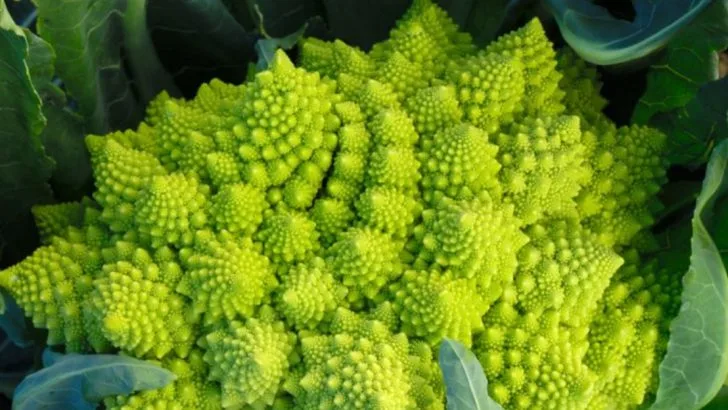Nature has a wild imagination—especially when it comes to vegetables. From alien-like shapes to unexpected colors, some veggies look like they belong in a sci-fi movie rather than your dinner plate.
But don’t be fooled by their bizarre appearances—these 17 unusual vegetables are not only edible, they’re packed with flavor and nutrients.
Explore this list of curious crops, from purple carrots to Romanesco’s fractal spirals, and discover how these weird-looking wonders can elevate your meals and add flair to your garden.
Romanesco
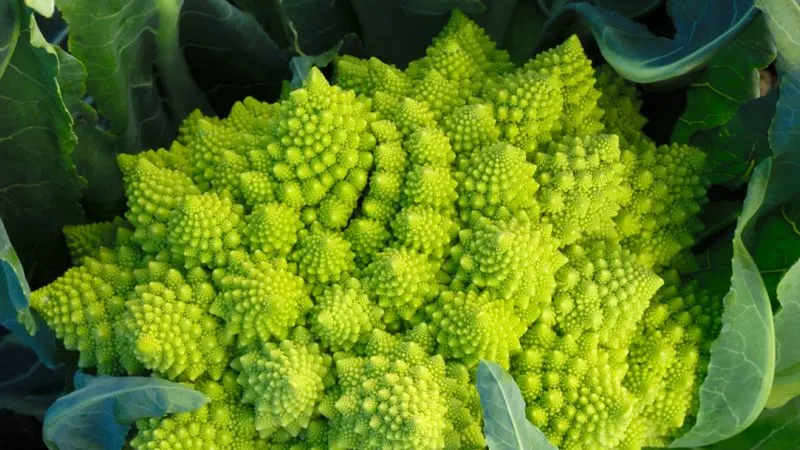
Imagine a vegetable that looks like it was designed by a mathematician. Romanesco, with its vibrant, lime-green fractal patterns, is a feast for the eyes. This architectural wonder is more than just a pretty face. Its flavor is a delightful cross between broccoli and cauliflower, offering a mild, nutty taste. Enjoy it roasted, where its natural sweetness shines through, or add it to salads for a unique crunch. Romanesco’s visual appeal makes it an instant conversation starter at any dinner party. Its ability to absorb flavors means it pairs beautifully with robust spices or simple drizzles of olive oil.
Kohlrabi
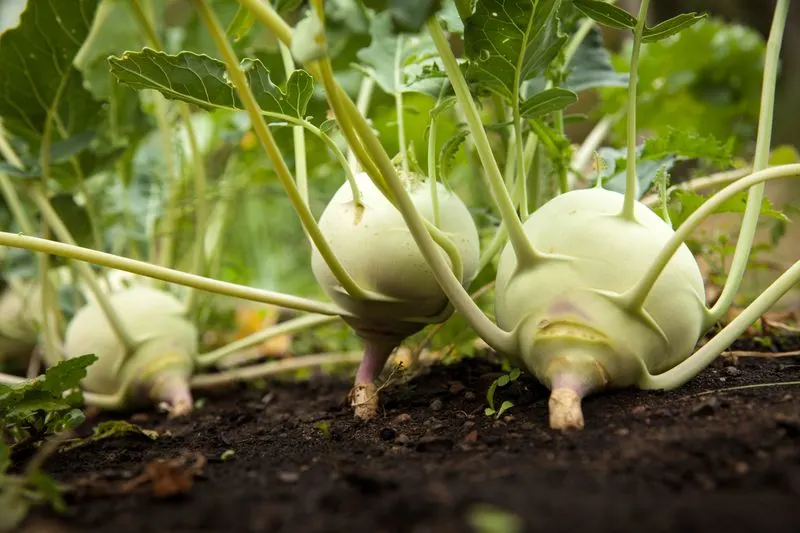
Kohlrabi might remind you of a spacecraft landing in your kitchen. Its bulbous shape and alien-like stems set it apart. Beneath its quirky exterior lies a crisp, refreshing crunch. With flavors reminiscent of a mild radish or broccoli stem, kohlrabi is incredibly versatile. Slice it thinly for slaws, or roast it to bring out its natural sweetness. Its adaptability makes it a favorite among chefs looking to innovate. Whether raw or cooked, kohlrabi’s unique texture adds a delightful dimension to dishes. It’s a vegetable that proves appearances can be deceiving, with its taste being anything but ordinary.
Oca
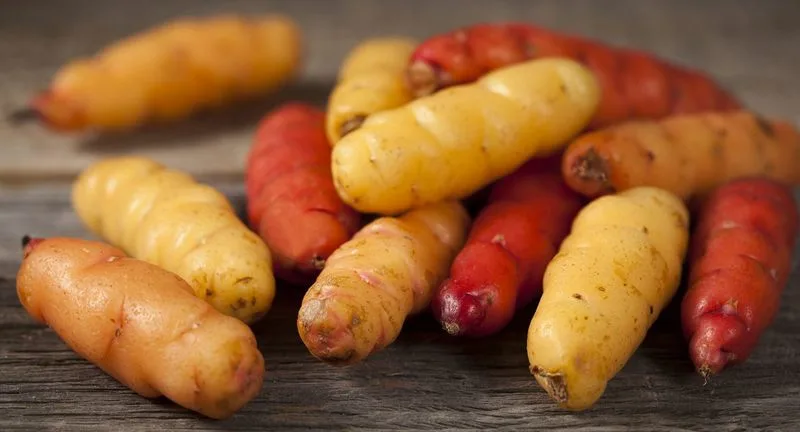
These small, colorful tubers are often mistaken for potatoes, yet they have a charm all their own. Oca, with its vibrant yellows, reds, and purples, adds an eye-catching splash to your plate. Its tangy, lemony flavor stands out, making it a perfect addition to diverse dishes. Roasting enhances its natural sweetness, while boiling preserves its zingy taste. Oca is a staple in Andean cuisine, celebrated for both its nutritional value and its surprising versatility. Its vibrant colors remain vivid even after cooking, ensuring your meals are as visually appealing as they are tasty.
Crosne
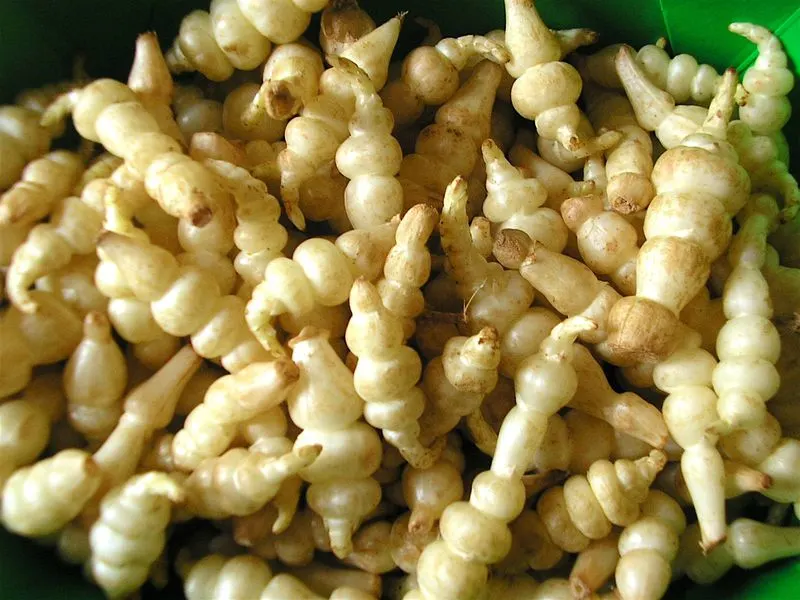
Crosne, also known as Chinese artichoke, intrigues with its segmented, spiral-like appearance. Resembling tiny pagodas, these tubers are a hidden gem in the vegetable world. Their crunchy texture and nutty, artichoke-like flavor make them a delightful surprise in salads and stir-fries. A simple sauté in butter brings out their unique taste, offering a gourmet experience. Crosne’s rarity in markets adds an element of exclusivity to dishes, making it a prized ingredient for adventurous cooks. It’s a testament to the wonders hidden in nature’s pantry, waiting to elevate your culinary creations.
Buddha’s Hand
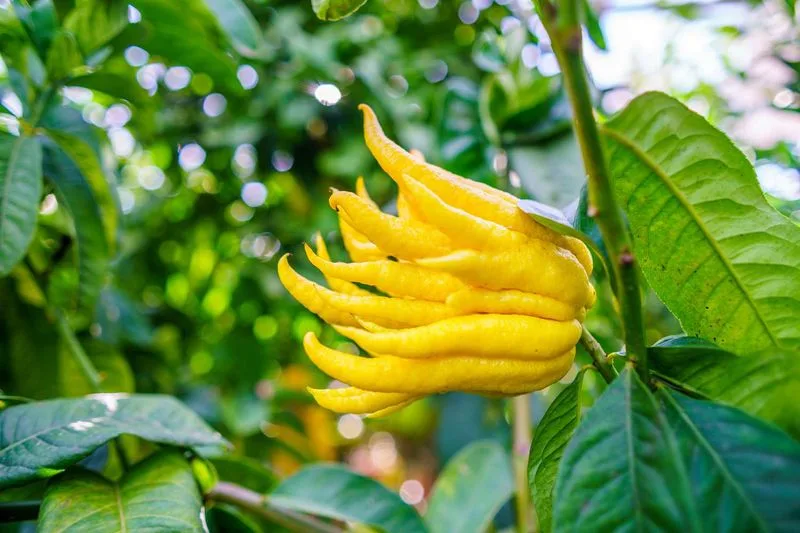
This citrus fruit, known for its finger-like extensions, looks more like a sculpture than something edible. Buddha’s Hand is prized not for its juice, but for its fragrant zest. Its lemony aroma is both sweet and floral, making it a perfect addition to desserts and cocktails. The absence of bitterness allows it to blend seamlessly into sugar syrups, infusing them with a delicate citrus note. Culinary enthusiasts use it to craft aromatic oils or to zest over seafood dishes. Its unique form is not just a visual marvel but a versatile ingredient in the flavor department.
Purple Cauliflower

Forget the ordinary white cauliflower; purple cauliflower is where intrigue meets nutrition. Its vivid color comes from anthocyanins, the same antioxidants found in red cabbage and red wine. With a slightly sweeter taste than its white counterpart, it adds both flavor and visual appeal to dishes. Whether roasted, steamed, or pureed, this vegetable retains its stunning hue, turning everyday meals into culinary masterpieces. Its color remains vibrant when cooked, ensuring that your dishes are not just nutritious, but Instagram-worthy too. Purple cauliflower doesn’t just stand out visually; it’s a powerhouse of health benefits.
Fiddleheads
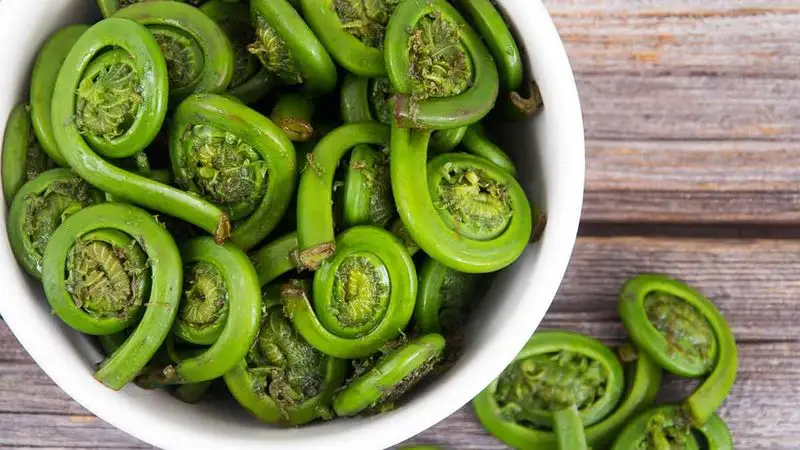
Curled up like the scroll of a violin, fiddleheads are as enchanting to look at as they are to eat. These young ferns offer a taste akin to asparagus with a hint of nuttiness. Their delicate texture makes them a springtime delicacy that’s eagerly awaited by gourmets. Blanching them before a quick sauté with garlic and lemon butter enhances their flavor. Fiddleheads are not just about taste; they’re a nod to the beauty of renewal in nature. Each bite is a reminder of new beginnings, captured in the unfurling of these vibrant greens.
Dragon Carrot
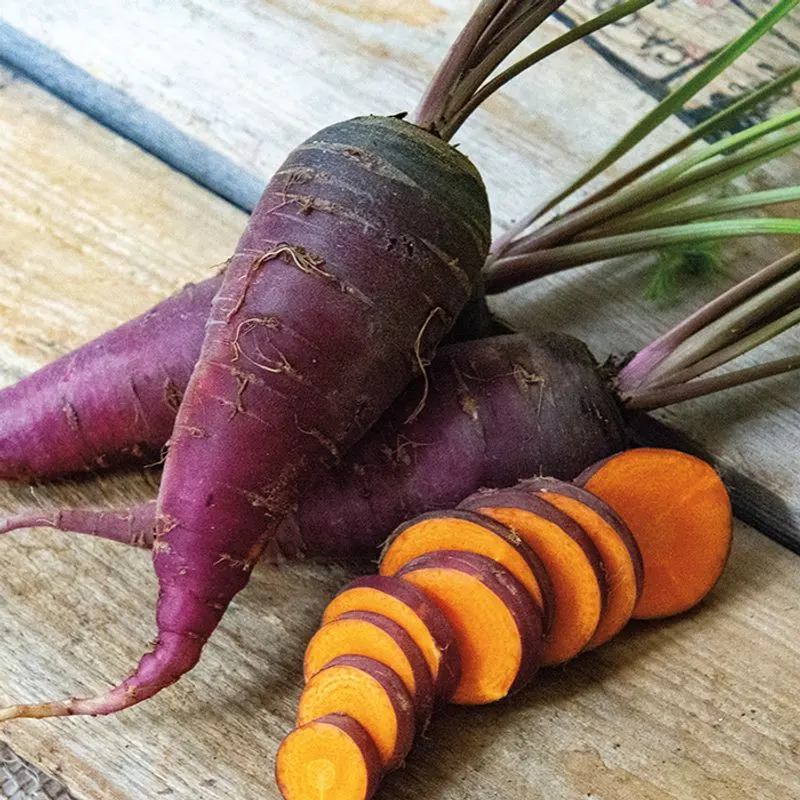
Dragon carrots are a feast for both the eyes and the palate. With their striking purple skin and orange interior, they add an unexpected splash of color to any dish. Their flavor is sweeter and more complex than regular carrots, with a hint of spice. Perfect for roasting, these carrots caramelize beautifully, enhancing their natural sweetness. Their vibrant color also makes them a fun addition to salads and crudité platters. Dragon carrots prove that sometimes, the most enticing flavors come from the most vibrant colors, making them a favorite among adventurous eaters.
Romanian Red Garlic

Garlic is a staple in many kitchens, but Romanian Red Garlic takes it to another level. With deep red stripes on its outer skin, it’s visually striking and offers a robust, spicy flavor. Ideal for roasting, it mellows into a rich, almost buttery taste. Its unique flavor profile makes it a favorite for those seeking to add depth to dishes. The distinctive appearance and taste make it a conversation starter, whether used in pastas, roasts, or sauces. Romanian Red Garlic is where beauty and boldness meet, both in looks and flavor.
Yardlong Beans

Yardlong beans are as fascinating in appearance as they are in culinary potential. These slender, elongated beans can grow up to three feet long, adding a playful twist to meals. Their crisp texture and slightly sweet flavor make them ideal for stir-frying or grilling. Unlike regular green beans, they hold their shape well during cooking, providing a satisfying crunch. Whether used in Asian-inspired dishes or simply sautéed with garlic, yardlong beans bring both novelty and nutrition to the table. Their unique length and flavor make them a must-try for vegetable enthusiasts.
Romanian Cheese Pepper
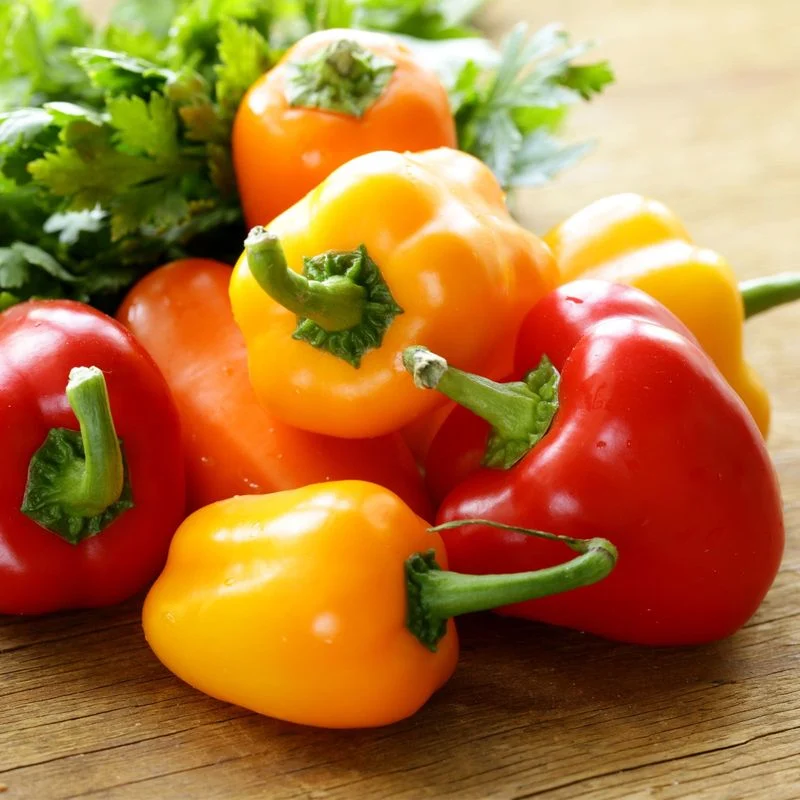
The Romanian cheese pepper stands out not just for its unique, squat shape but also for its flavor. Resembling a plump tomato, its flesh is sweet with a hint of spice, making it perfect for stuffing or roasting. When grilled, it develops a smoky undertone, enhancing its natural sweetness. This pepper’s unusual appearance often surprises those expecting a traditional bell pepper taste. Its versatility in the kitchen makes it a favorite for chefs looking to innovate with flavors and presentations. An unexpected delight, it challenges perceptions of what a pepper can be.
Samphire

Known as the ‘sea asparagus,’ samphire brings a taste of the ocean to your plate. Its succulent, salty taste and crisp texture make it a perfect complement to seafood dishes. Often found along coastlines, this vegetable is a refreshing reminder of the sea breeze. Blanching it briefly preserves its vibrant color and enhances its natural flavors. Samphire is not just a delight for the taste buds but also a nod to coastal culinary traditions. Its unique taste profile makes it a sought-after ingredient for those craving a touch of the sea.
Malabar Spinach

Malabar spinach defies expectations with its glossy, thick leaves and climbing vine habit. Unlike traditional spinach, it thrives in heat, making it a staple in warm climates. Its juicy leaves have a mild flavor, similar to a mix of spinach and chard, making it versatile in soups and curries. Sautéing brings out its slight mucilaginous texture, akin to okra. Beyond its culinary uses, Malabar spinach serves as an ornamental plant, adding lush greenery to gardens. It’s a testament to the diversity within the spinach family, offering both beauty and flavor.
Bitter Melon
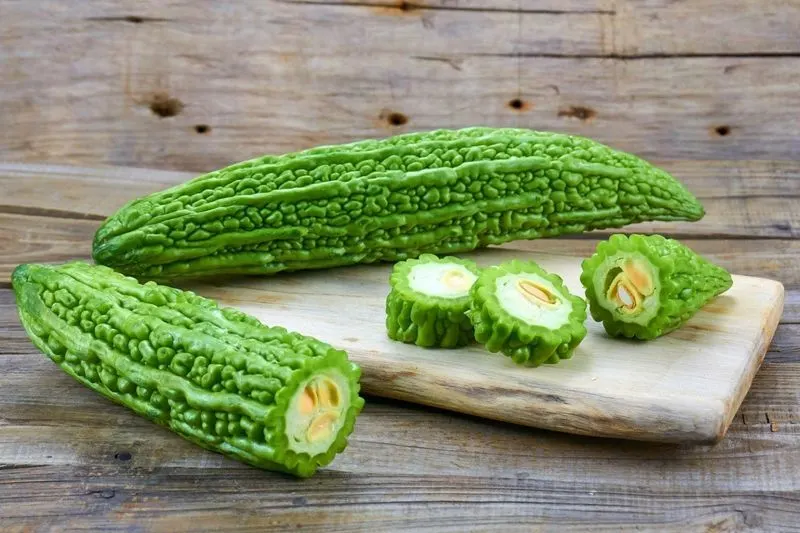
Bitter melon, with its distinctive wart-like skin, is a vegetable that challenges conventional aesthetics. Its bitterness is an acquired taste, yet it’s celebrated in Asian cuisines for its health benefits. When cooked, it absorbs surrounding flavors, making it a versatile ingredient in stir-fries and soups. Its appearance might be intimidating, but its ability to improve dishes is undeniable. Often paired with bold flavors like garlic and chili, bitter melon transforms simple meals into complex culinary experiences. Its unique profile is a testament to the bold and unexpected in the vegetable world.
Chayote

Chayote, with its smooth, pear-like exterior, surprises with its mild flavor and crisp texture. Often compared to summer squash, it’s a versatile addition to various dishes. Its subtle taste makes it ideal for absorbing spices and herbs, whether in stews or raw in salads. Chayote’s ability to adapt to different culinary styles makes it a favorite in Latin American and Southeast Asian cuisines. Its appearance might seem simple, but its culinary potential is vast. This vegetable proves that sometimes, simplicity in appearance hides a world of flavors.
Rutabaga

Often confused with turnips, rutabagas have a distinct charm of their own. Their purple and yellow exterior gives way to a creamy, subtly sweet interior. Roasting brings out their natural sweetness, making them a delightful side dish. Their versatility extends to soups and mashes, where they add a unique depth of flavor. Rutabagas are a staple in hearty winter meals, cherished for their comforting, earthy taste. Despite their humble appearance, they offer a culinary richness that surprises the palate, proving that they’re more than meets the eye.
Black Radish

With its dark, rough exterior, black radish might seem unwelcoming, yet its crisp, peppery interior tells a different story. This root vegetable offers a bold, spicy flavor that can be tamed by roasting or mellowed in a salad. Its striking color contrast makes it an eye-catching addition to dishes. Black radish is not just about its looks; it’s packed with nutrients and offers a surprising depth of flavor. Ideal for those seeking to add a bit of spice to their culinary repertoire, this radish is a testament to bold flavors hidden beneath rugged exteriors.

